Emirati heritage: Dubai street art turns urban sprawl into open-air museum
Urban art is a growing trend in the Middle East, a region dotted with cities carrying complex histories

A picture taken on February 6, 2017 shows graffiti by Malaysian-based Lithuanian artist Ernest Zacharevic on a wall of Dubai's 2nd of December street, which is part of the government-funded Dubai Street Museum project. PHOTO: AFP
But a group of street artists now also wants to turn the concrete walls of a fast-growing urban sprawl into an open-air museum that celebrates Emirati heritage and speaks to everyone in the multicultural city.
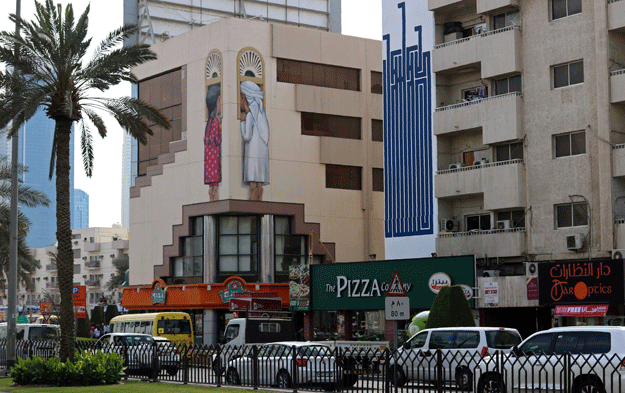 A general view shows graffiti by French artist Seth known as "The Globepainter" on 2nd of December street, which is part of the government-funded Dubai Street Museum project in Dubai on February 6, 2017. PHOTO: AFP
A general view shows graffiti by French artist Seth known as "The Globepainter" on 2nd of December street, which is part of the government-funded Dubai Street Museum project in Dubai on February 6, 2017. PHOTO: AFPFrom poetry painted in intricate Arabic calligraphy to a portrait of an old man rowing a wooden boat, the art of the government-funded Dubai Street Museum is bringing new life to the city.
The project features the work of 16 mural and graffiti artists of different genres and nationalities, including four Emiratis.
They include Malaysian-based Lithuanian artist Ernest Zacharevic – who has been likened to British graffiti artist Banksy – and Tunisian street artist The Inkman.
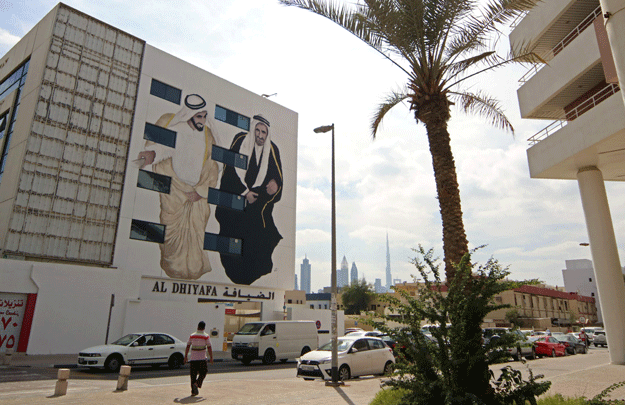 A picture taken on February 6, 2017 shows graffiti by Emirati muralist Ashwaq Abdullah, paying homage to founders of the United Arab Emirates, sheikhs Rashed Al Maktoum and Zayed Al Nahyan, on a wall of Dubai's 2nd of December street, which is part of the government-funded Dubai Street Museum project. PHOTO: AFP
A picture taken on February 6, 2017 shows graffiti by Emirati muralist Ashwaq Abdullah, paying homage to founders of the United Arab Emirates, sheikhs Rashed Al Maktoum and Zayed Al Nahyan, on a wall of Dubai's 2nd of December street, which is part of the government-funded Dubai Street Museum project. PHOTO: AFPEach brings their own interpretation of a curated theme – "The Past" – to the 2nd of December Street in the heart of Satwa, one of the older quarters of Dubai.
"Dubai has everything, from finance to tourism," says project director Shaima Al-Soueidi.
"Tourists can see our history at the museums. But we want everyone to be able to see that history everywhere, even in the streets."
Urban art is a growing trend in the Middle East, a region dotted with cities carrying complex – and frequently crisis-ridden – histories.
But while graffiti in older cities like Tunis and Beirut often acts as a form of resistance against contemporary politics, the art form takes on a more a conciliatory tone in Dubai.
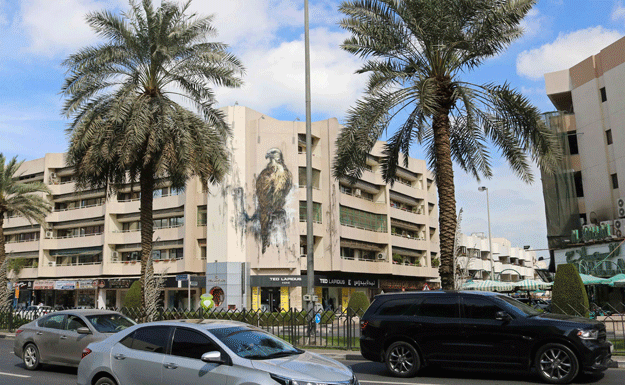 A general view shows graffiti by Chinese contemporary artist Hua Tunan of a falcon, UAE's national bird, on 2nd of December street, which is part of the government-funded Dubai Street Museum project in Dubai on February 6, 2017. PHOTO: AFP
A general view shows graffiti by Chinese contemporary artist Hua Tunan of a falcon, UAE's national bird, on 2nd of December street, which is part of the government-funded Dubai Street Museum project in Dubai on February 6, 2017. PHOTO: AFPSatwa, originally home to Emirati bedouins, is today a working-class neighbourhood largely inhabited by labourers from the Philippines.
Known locally as "mini Manila", Satwa is a bustling residential area dotted with late-night restaurants and shops selling everything from car parts to Chantilly lace.
Satwa's unique social makeup caught the eye of those behind the Dubai Street Museum, who hope to see the project spread further across the city.
"We were on the hunt for a way to turn Dubai into an open (-air) museum," Al-Soueidi explains.
"Because of its history and its position in the city, we landed on the 2nd of December Street as the ideal site."
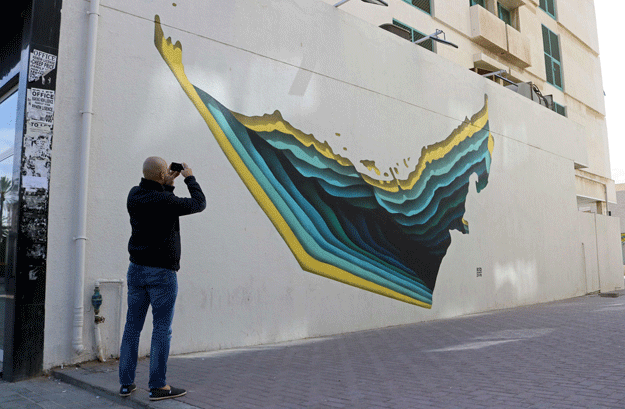 A man takes a picture of graffiti by Tunisian street artist The Inkman on a wall of Dubai's 2nd of December street, which is part of the government-funded Dubai Street Museum project, on February 6, 2017. PHOTO: AFP
A man takes a picture of graffiti by Tunisian street artist The Inkman on a wall of Dubai's 2nd of December street, which is part of the government-funded Dubai Street Museum project, on February 6, 2017. PHOTO: AFPThe first mural in the neighbourhood is that of a man in his abra, a narrow boat carved out of wood traditionally used for travel and trade across the Dubai Creek.
Further down the street, an image of the national white-and-gold falcon stands three storeys high, while a building facade is covered in white, red and green patterns that echo the weave in traditional garments.
Emirati muralist Ashwaq Abdullah is among the artists to bring their vision to the walls and parking lots of Dubai.
Her own mural pays homage to founders of the United Arab Emirates, sheikhs Rashed Al Maktoum and Zayed Al Nahyan.
"Mural art speaks to everyone in all segments of society and it generally focuses on the past, the heritage, of the place," Abdullah explains.
"For me this is a chance to express my love for my country," she adds.
"The hope is that it spills over into streets all across Dubai."

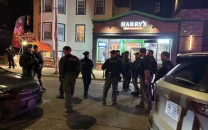
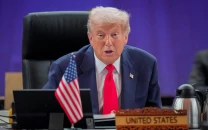
1701351241-1/Afghan-refugees-(3)1701351241-1-208x130.webp)
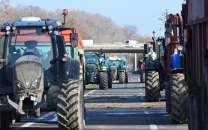
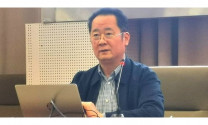
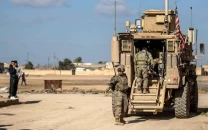





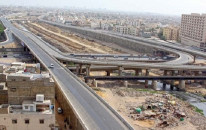






COMMENTS
Comments are moderated and generally will be posted if they are on-topic and not abusive.
For more information, please see our Comments FAQ